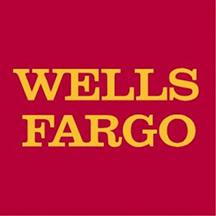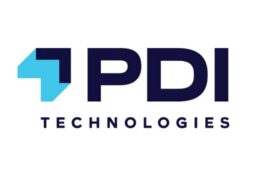 Manufacturers in the beverage industry continue to evolve to meet consumers’ needs, and this has helped the industry to remain vital.
Manufacturers in the beverage industry continue to evolve to meet consumers’ needs, and this has helped the industry to remain vital.
Current trends and the future outlook for the beverage industry were discussed at the recent Beverage Digest “Market Smarts” Conference in New York, and Wells Fargo Securities, who presented and sat on a panel at the event has revealed information that was presented by industry insiders at the event.
Overall, Wells Fargo Securities came away with a positive outlook for the beverage industry. The company reported that the key themes from this year’s conference included the following topics:
- Currently the largest contributor to food and beverage sales in the U.S., foodservice is a key channel for beverage growth;
- Despite low returns that are currently being generated, e-commerce will be an increasingly important driver of food and beverage sales growth in the next few years and cannot be ignored;
- As consumers’ tastes and preferences continue to change, manufacturers are becoming more sophisticated in evolving along with consumers’; and
- Health and wellness, functionality, convenience and authenticity remain key themes.
“Bottom line – we remain encouraged by the overall health of the beverage industry and believe manufacturers are increasingly taking a proactive stance to address near-term challenges and capitalize on longer-term opportunities,” said Bonnie Herzog, managing director of beverage, tobacco and convenience store research, Wells Fargo Securities LLC.
Among the industry insiders was Sandy Douglas, president of Coca-Cola North America, The Coca-Cola Co. According to Wells Fargo Securities, Douglas highlighted the strength of Coca-Cola’s business in the U.S. and the significant opportunity that lies ahead.
“Coca-Cola has recently evolved to focus on revenue and is at an inflection point in the transformation of its U.S. system through its refranchising, which we believe remains a significant opportunity in the years to come,” Herzog stated.
Coca-Cola is leveraging bottlers’ deep community focus, long history, and agility to build its marketing strength and to increase brand-building expertise under a universal IT/systems platform. The Coke system now has “one strategic voice” that is better positioned than ever to respond to evolving consumer needs in the U.S.
According to the report from Wells Fargo Securities, Douglas also highlighted Coca-Cola’s proactive approach to the ongoing health/obesity debate. Coca-Cola is seeking to “shape choice, not just provide it” and take a proactive approach to “Be. Do. Say.” and transform the dialogue to help solve the challenge of health and obesity.
Douglas also discussed the potential for:
- Freestyle: a “platform” not a machine, with a huge opportunity remaining;
- Teas and coffee drinks, led by Gold Peak & Honest; and
- Substantial runway with small packs to drive revenue growth and continue to meet evolving consumer demand.
Other industry insiders to speak at the conference were Anne Fink, president of PepsiCo Global Foodservice and Roberto Rios, senior vice president and chief marketing officer of PepsiCo Global Foodservice, Wells Fargo Securities reported. These individuals discussed the U.S. foodservice industry, which is now the largest contributor to food and beverage sales in the U.S.
According to the report from Wells Fargo Securities, key consumer trends transforming PepsiCo’s approach to the industry include:
- Authenticity – consumers want “real” food made with “real” ingredients;
- Health & Wellness – consumers want products that positively impact their wellbeing;
- Experiences Matter – millennial consumers value experiences over material objects which translates to expectations in foodservice; and
- Networked life – consumers are connected all the time and share their experiences extensively on social media. PepsiCo is responding to these trends by elevating the consumer experience through design, engagement and innovation.
Wells Fargo Securities reported that, for the Dr Pepper Snapple Group, Gilberto Maldonado, general manager of Grupo Peñafiel discussed:
- The significant opportunity that Mexico represents for Dr Pepper Snapple given its size and growth despite ongoing macro challenges;
- Dr Pepper Snapple’s powerful portfolio of leading brands, particularly Peñafiel, have a long runway of growth in Mexico and beyond; and
- Mexico’s recent sugar tax had a very limited impact on calories consumed, which should help shape the ongoing sugar-tax debate.
E-Commerce is a Critical Opportunity
Wells Fargo reported that Chris Butler, director of e-commerce and digital activation for Nestle Waters North America and Michelle Cote, vice president of data and insights for MyWebGrocer, discussed recent trends in e-commerce. Digital is now the leading source of media for consumers, and consumers are making two-thirds of their purchases directly with or aided by online sources. While beverages, and groceries more broadly, are relatively underpenetrated in the e-commerce channel, the majority of sources believe online shopping will account for more than 10% of groceries purchased within the next five years, led by Amazon and the recent major strategic push from Walmart with its “Click & Collect” platform. Research has shown that the online beverage shopper spends 122% more than the traditional grocery shopper; furthermore, while 79% of online shopping baskets have beverages in them.
Other key themes in e-commerce that were revealed at the conference include:
- The shift towards e-commerce is being attributed to convenience;
- Beverage sales over-index online given their greater average weight and the inherent ease for consumers to purchase beverages online;
- Digital platforms drive decision making;
- Authentic personalized content wins with consumers;
- E-tailers must directly connect with and engage with consumers to be successful; and
- E-commerce is still a huge developing space for beverages/grocery retail, however it will be critical.
Wells Fargo Securities reported that the panelists at the conference emphasized that, while online grocery does not currently generate great returns, over time as it is scaled up, online grocery will be a key contributor of growth and manufacturers must make investments today to prepare for the future.
Global Beverage Trends Suggest Favorable Outlook
Richard Hall, chairman of Zenith International, Duane Stanford, editor of Beverage Digest and Jonas Felicano, market consultant for Beverage Digest all presented at this year’s conference, according to Wells Fargo Securities.
Key takeaways from their presentations include:
- Carbonated Soft Drinks (CSDs) still have the largest “share of stomach” in the U.S. (22%) but volumes have declined for 11 straight years, with 94% of volume declines since 2010 coming from diet CSDs;
- Recent successes in diet CSDs suggest that brands without a full-calorie counterpart for consumers to compare to (e.g. Sparkling ICE) or products that emphasize functional benefits without highlighting the low-calorie nature of the product (e.g. Kickstart) can buck the diet decline trend;
- Globally, beverages have outpaced population growth by three to four times over the last 10 years, which is expected to continue for the next five years at an accelerated pace;
- Asia Pacific has contributed more growth over the last five years than all other regions combined, which should continue for the next five years, led by China; and
- According to Richard Hall, three key challenges facing the global beverage industry today include the ongoing obesity epidemic, the environmental impact of beverages, and regaining consumers’ trust.




